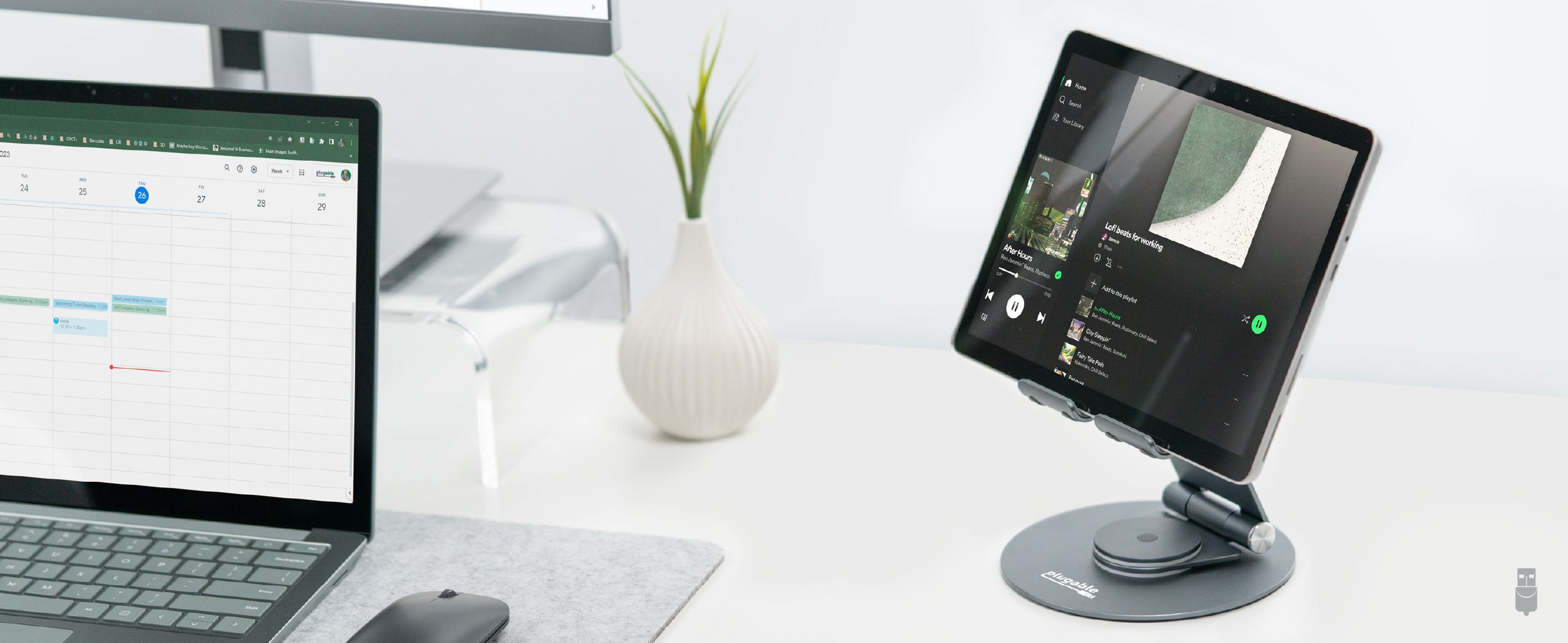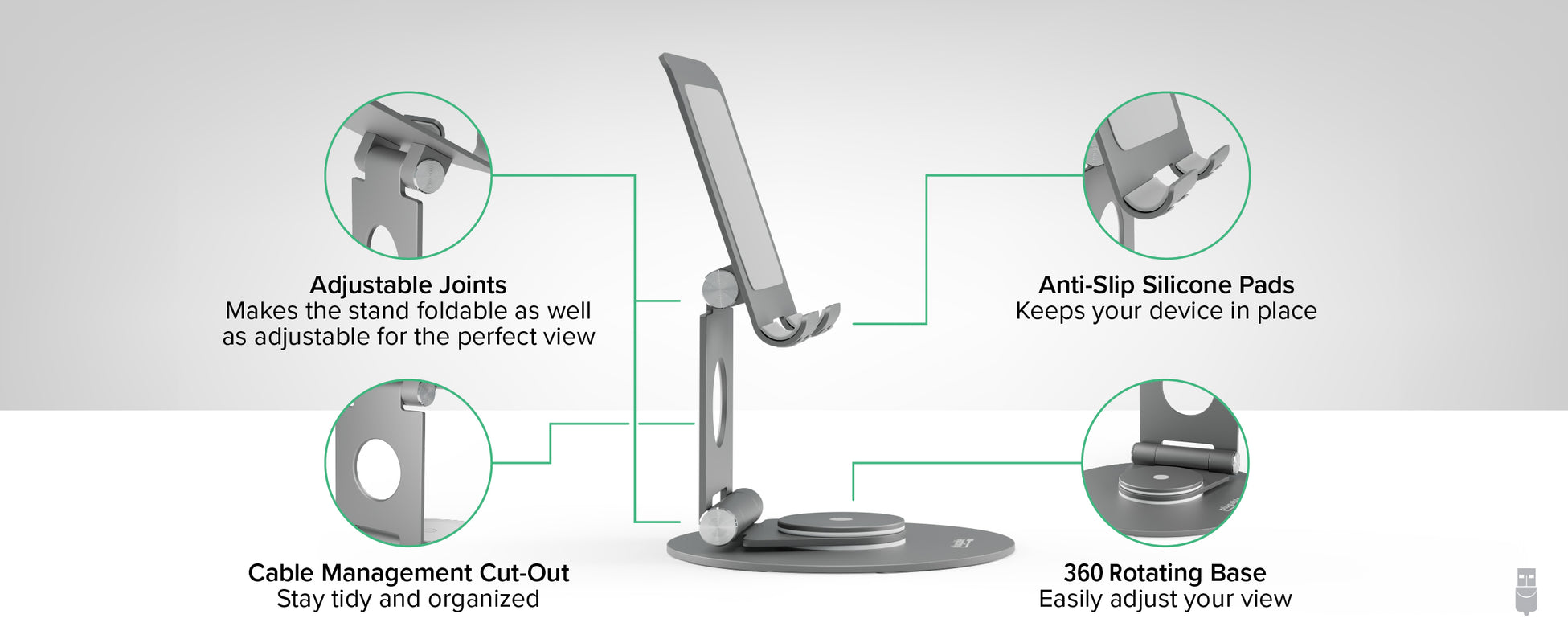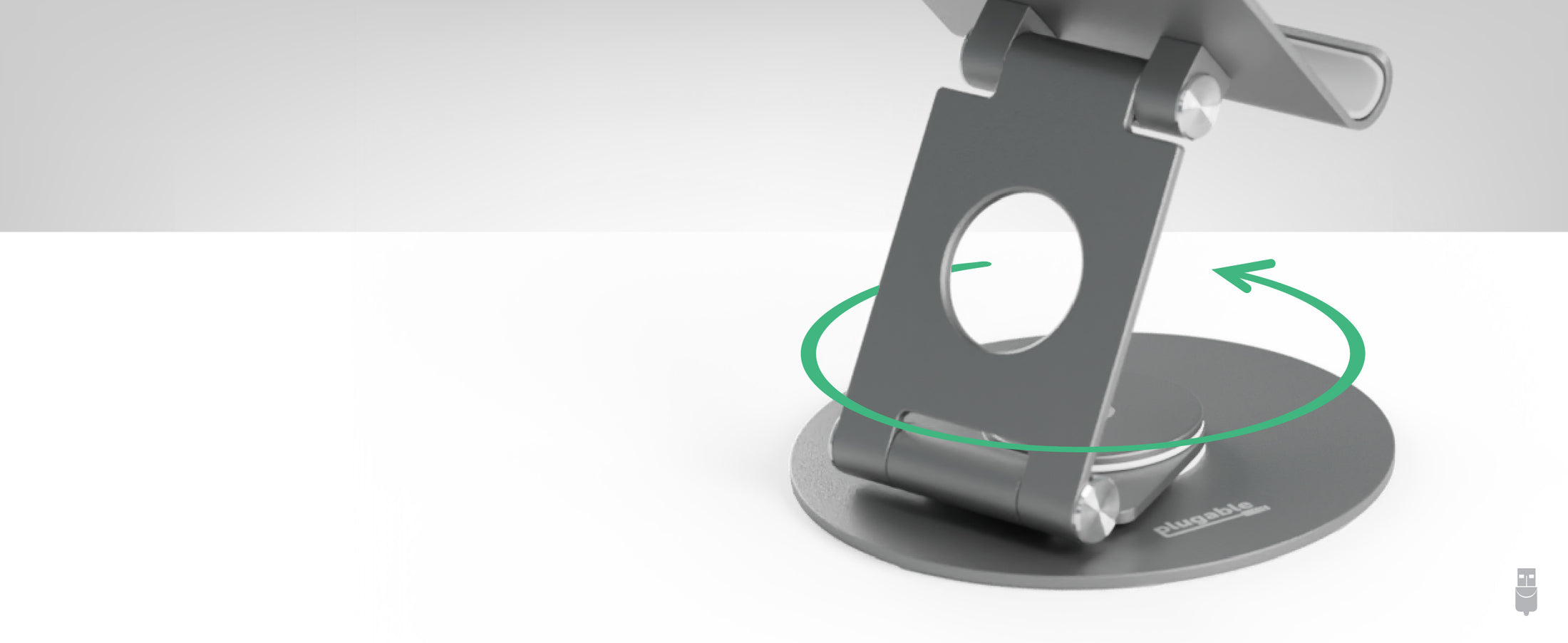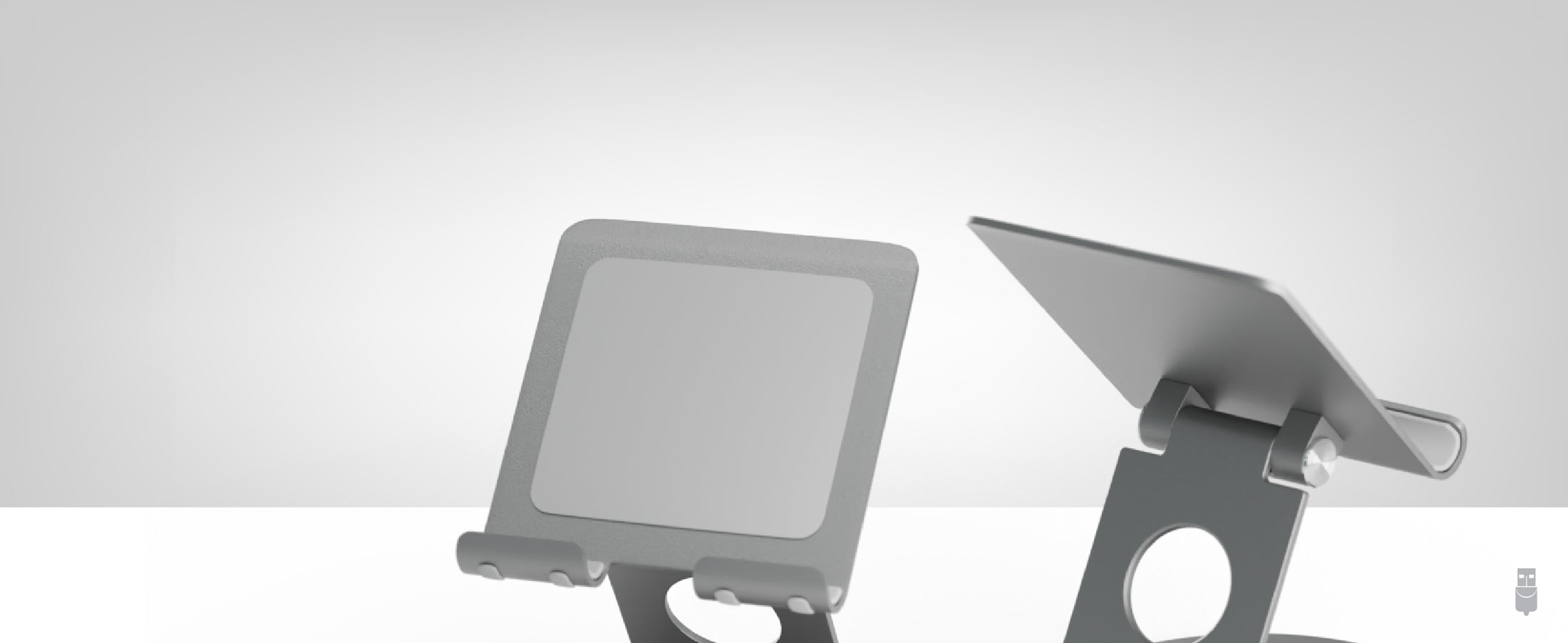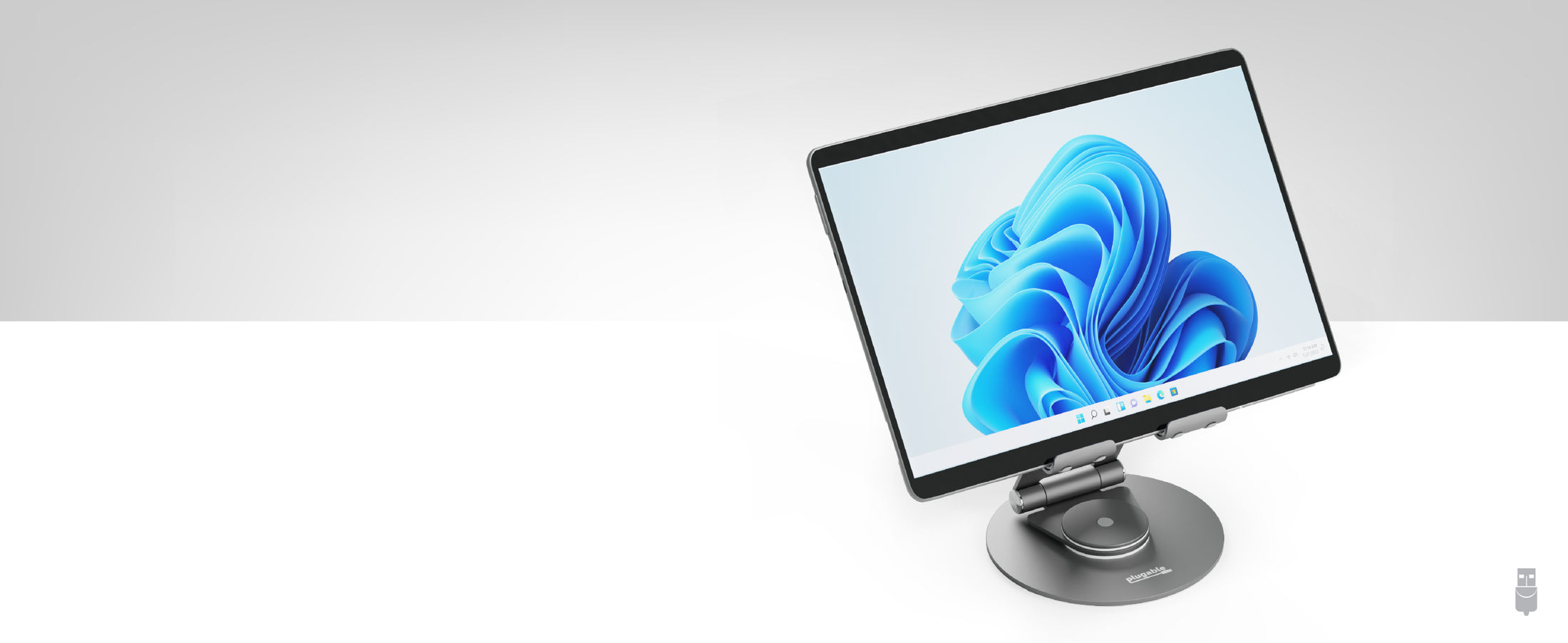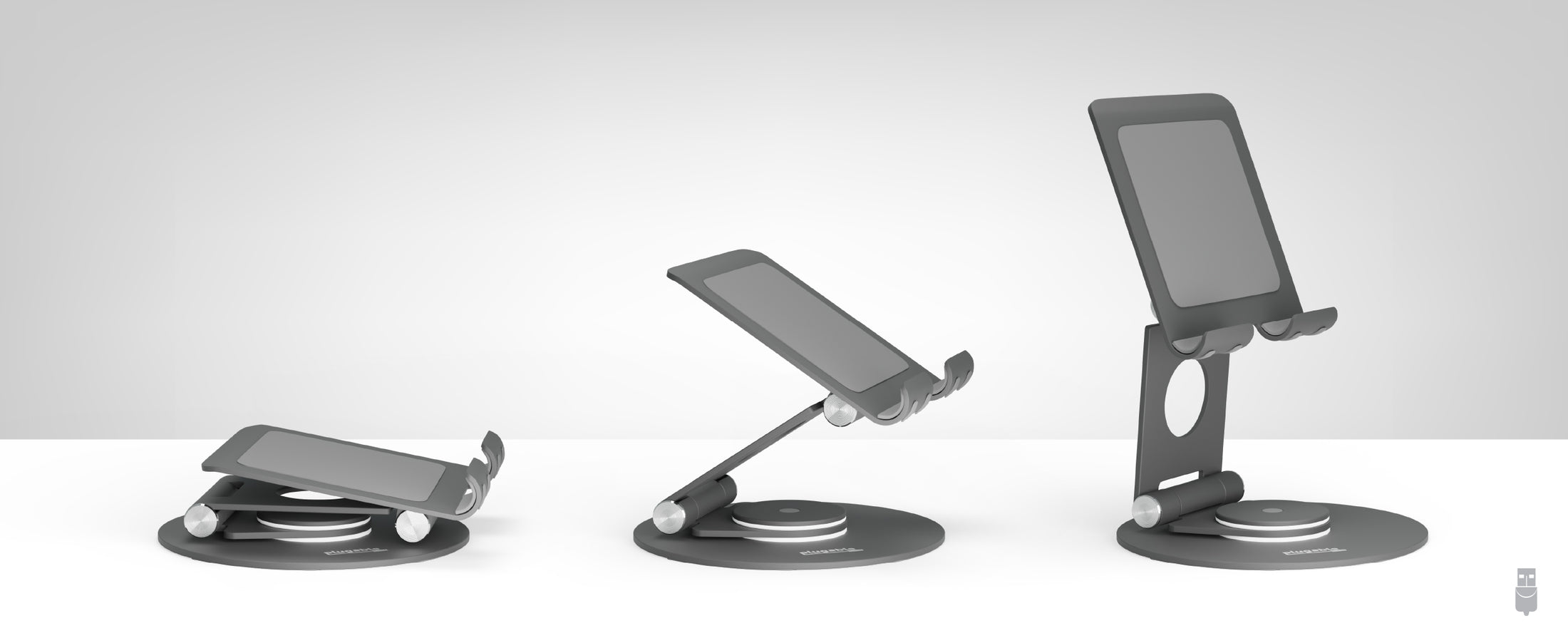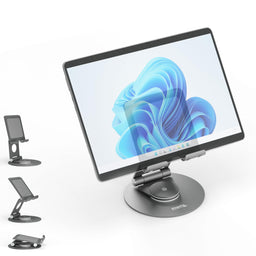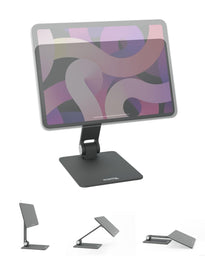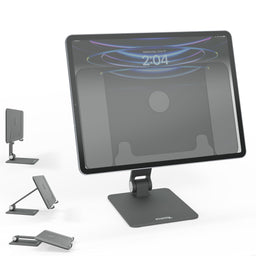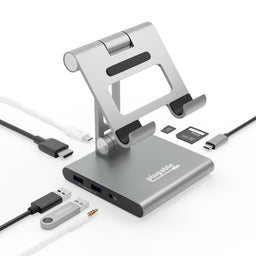










Hassle free, 2-Year Warranty
Fast, Free Shipping on Orders $35+
Lifetime Technical Support
30-Day Money Back Guarantee
Plugable Universal Tablet Stand, 360° Rotating Base
$34.95 USD
SKU: PT-STAND1Amazon Rating : (102 Reviews)
Features
- Overview— Elevate your workspace with the Plugable Universal Tablet Stand (PT-STAND1). A universal fit for phones and tablets up to 12.9”, the tablet stand for desk and travel features a 360° rotating base, foldable design with no-slip base, and cable pass-through for a neat, organized desk
- Universal Fit— A secure fit for the iPad 11 pro, or just about any other tablet or phone up to 12.9", the PT-STAND1 is a good fit for any device. Its adjustable, protective design ensures a safe, stable, and comfortable viewing experience for all your devices
- Adjustable— Stay flexible with a base that spins 360°, and two joints with 180° of movement, this phone, tablet, and iPad pro stand easily collapses for convenient transport and storage. it's ideal for travelers, dynamic workspaces, and folks looking for the perfect view
- Works With— This stand for iPad, phone, and tablet accommodates any smartphone or tablet up to 12.9”
- 2-Year Coverage, Lifetime Support— Every Plugable product, including this adjustable tablet stand, is covered against defects for 2 years and comes with lifetime support. If you ever have questions, contact our North American-based team - even before purchase



